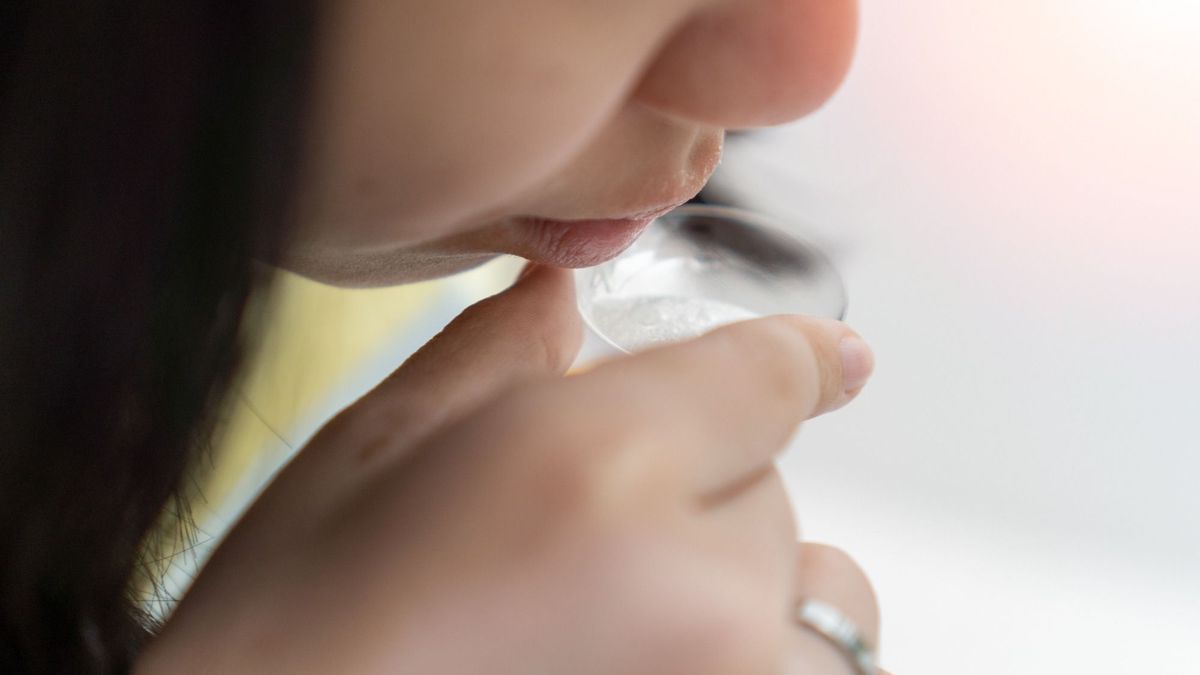
The cytobacteriological examination of sputum (ECBC) aims to analyze the bacteria present in the secretions of the respiratory tract. Update with Dr François Blanchecotte, medical biologist, President of the Union of Biologists.
ECBC: what is sputum cytobacteriological examination?
The cytobacteriological examination of sputum (ECBC) is a medical biology examination which consists of analyzing sputum, that is to say the thick mucus secreted in the bronchi. ECBC makes it possible to identify the pathogenic germs causing an upper airway infection. However, its usefulness remains controversial because the results often turn out to be approximate.
“The problem is that it is very difficult to spit. Eight times out of 10, it is saliva. To spit, it is necessary to have phlegm and for the secretions to come from the back of the throat . In reality, it is difficult to obtain a quality sample unless the person has an extremely serious infection in which there is material (pus, bacteria, blood). comments Dr François Blanchecotte.
Where, when and how to do an ECBC?
Several sputum collection techniques can be proposed:
- Spontaneous expectoration: this is the most common technique. The patient must spit into a sterile pot after coughing in order to collect the sputum which will then be analyzed. “ECBC should be carried out upon waking, on an empty stomach, after brushing the teeth, rinsing the mouth with tap water and gargling with water containing an antiseptic agent. The difficulty lies in not adding saliva“, indicates the medical biologist. This sample can be taken at home or directly in a medical biology laboratory;
- Expectoration caused: in this case, expectoration is induced using a saline solution and/or drainage physiotherapy;
- More complex techniques can be performed in a hospital setting: bronchoscopy (protected bronchial brushing) or bronchoscopy. More invasive, these methods are nevertheless much more precise since bronchial secretions are directly collected in the respiratory tract.
How to interpret the results of an ECBC?
Normally, sputum naturally contains bacteria in small amounts. “The sample is considered pathological when the threshold exceeds 106 bacteria per ml”, informs Dr François Blanchecotte.
However, ECBC results remain difficult to interpret because the samples may contain bacteria from the normal flora of the mouth.
Quality criteria for interpretation
In the report, two criteria make it possible to highlight the quality of the sample: a description of the secretions (color, odor, quantity, appearance, etc.) as well as the qualification of the cells found (alveolar cells, epithelial cells).
If the sample meets these quality criteria, it is cultured in order to detect the bacterial species responsible for pulmonary or bronchial infections and test their sensitivity to different antibiotics. Otherwise, and in the event of salivary contamination, the doctor may ask to repeat the examination.
The bacteria found
The bacteria most frequently found in the bronchi and lungs are: Streptococcus pneumoniae, Staphylococcus aureus, Klebsiella pneumoniae, Haemophilus influenzae et Moraxella catarrhalis. Note that streptococcus is present in a commensal state, so it is not necessarily indicative of an infection.
In immunocompromised or cystic fibrosis patients, two germs are often present: Pseudomonas aeruginosa et Staphylococcus aureus. More rarely, the bacteria Legionnella pneumophila can be found.
Indications: why do an ECBC?
COPD, tuberculosis, bacteria testing…
The indications for ECBC are increasingly limited according to our expert. “This examination is mainly prescribed to diagnose tuberculosis. It can also confirm a pulmonary or bronchial infection, and highlight a superinfection in the context of asthma or COPD. ECBC can also be useful to identify the appropriate antibiotic following treatment failure or to be used to monitor the effectiveness of a treatment”he explains.
Who can collect the ECBC?
ECBC is carried out by the patient himself, possibly guided by a doctor or physiotherapist, when it involves spontaneous or induced expectoration. Bronchoscopy and bronchoscopy require to be carried out in a hospital environment.
How long does a sputum analysis take?
“The sputum analysis is carried out over three consecutive days to look for Koch’s bacillus, the bacteria that causes tuberculosis, explains the specialist. In the event of an infection in the back of the throat such as angina, a test for the DNA of bacteria using a swab is preferred. This technique also makes it possible to detect mycosis or yeasts in the mouth which colonize the digestive tract like thrush in children, for example.” This diagnostic approach is called syndromic.
